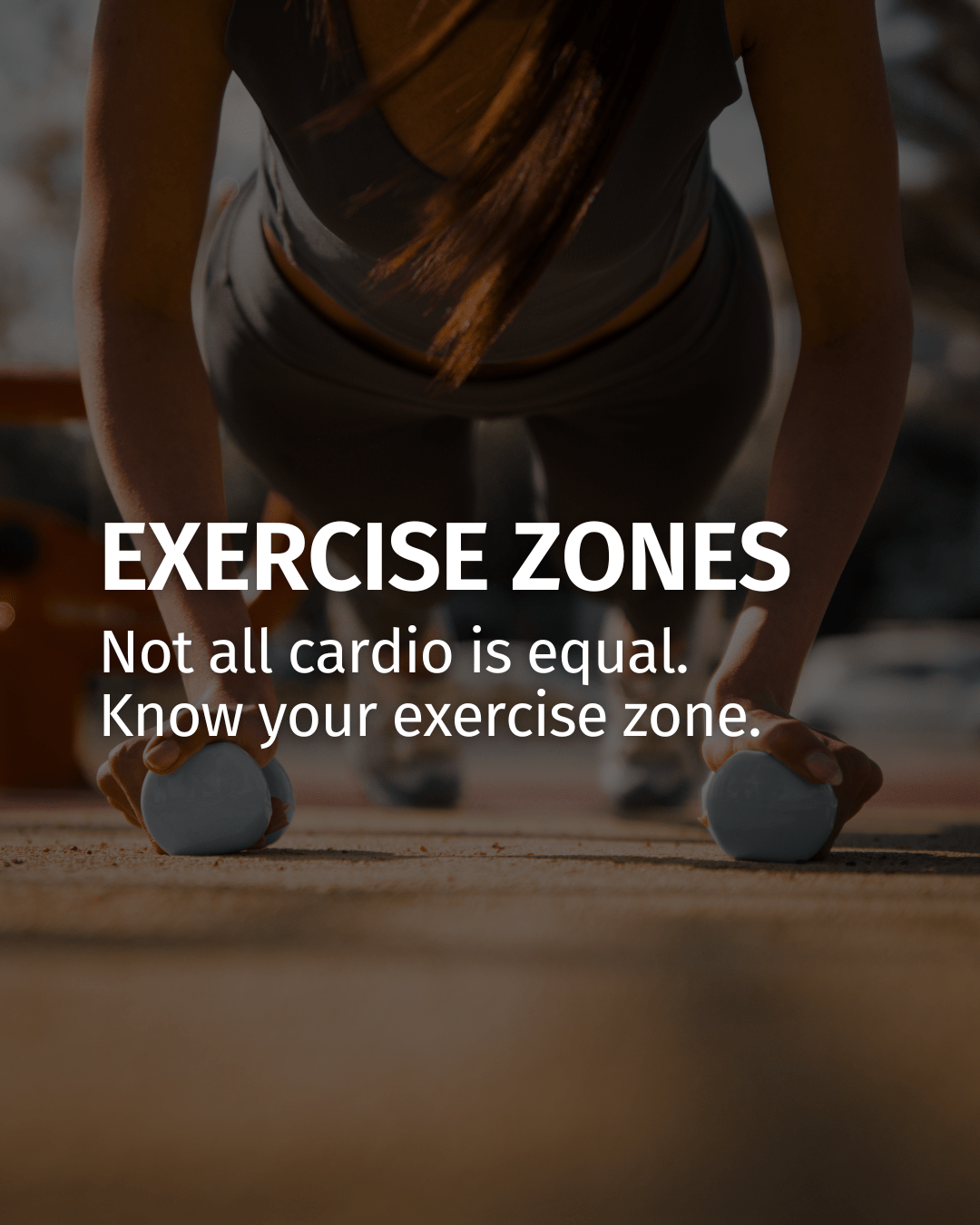Overview:
Not all workouts have the same effect on your body. Some burn fat, others build stamina, and some enhance heart health.
The secret lies in your exercise zone—determined by your heart rate.
Your heart rate during exercise determines how your body fuels itself and what results you get.
To calculate your zones:
Maximum Heart Rate (MHR) = 220 minus your age
Zone 1: Recovery (50-60% of MHR)
Effort Level: Light
Feel: Comfortable pace
Benefits: Supports recovery, reduces soreness, promotes circulation
Best for: Warm-ups, cool-downs, and active rest
Examples: Walking, gentle yoga, light mobility work
Zone 2: Fat Burn (60-70% of MHR)
Effort Level: Light to moderate
Feel: You can talk, but not sing
Benefits: Burns mostly fat, trains mitochondria, improves insulin sensitivity and metabolic flexibility
Best for: Fat loss, longevity, metabolic health
Examples: Brisk walking, light jogging, steady hiking, easy cycling
Zone 3: Aerobic (70-80% of MHR)
Effort Level: Moderate
Feel: Increased breathing, sustainable pace
Benefits: Builds cardiovascular endurance, strengthens the heart and lungs
Best for: Aerobic base building
Examples: Jogging, longer steady-state cardio sessions
Zone 4: Threshold (80-90% of MHR)
Effort Level: Hard
Feel: Difficult to speak
Benefits: Improves stamina, increases lactate threshold
Best for: Short bursts of high-intensity intervals
Examples: HIIT, tempo runs, hard cycling intervals
Zone 5: Peak Effort (VO2 Max – 90-100% of MHR)
Effort Level: Maximum
Feel: Breathless, short bursts only
Benefits: Boosts speed, power, and athletic performance
Best for: Advanced fitness training
Examples: Sprints, explosive intervals, performance testing
How to Use This Guide:
- For fat loss and metabolic health: Stay mostly in Zone 2
- To boost performance: Mix in Zones 3-5 a few times per week
- For recovery: Include Zone 1 sessions regularly
Core Habit: Move Strong
Guiding Principle: Let Health Be Your Guide

